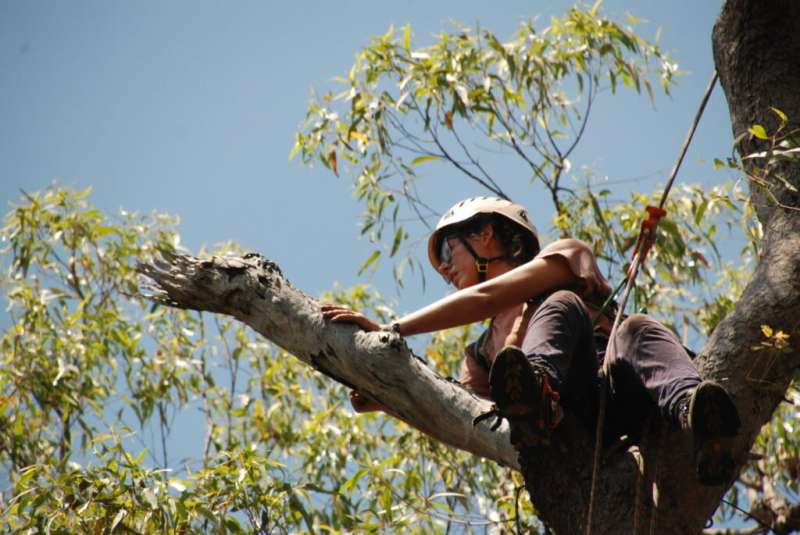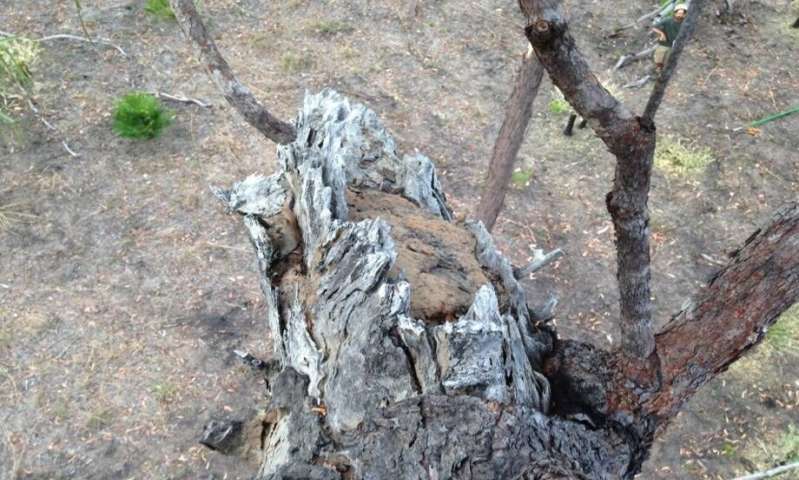Climbing trees reveals a housing shortage for tree-rats and other endangered animals

Estimates of tree hollows—which form the houses of several endangered species in northern Australia—are much too high, researchers at Charles Darwin University in the Northern Territory have found.
And the discovery could be bad news for several of Australia's most vulnerable species, including the Black-Footed Tree-Rat (Mesembriomys gouldii) and Brush Tailed Rabbit-Rat (Conilurus penicillatus).
"The most common approach to assessing the abundance of tree hollows is a ground-based count, usually aided by binoculars to scan the canopy and identify hollows," says scientist Cara Penton.
"But our work shows that this method results in pretty big over-estimates."
To check the accuracy of the approach, Ms Penton climbed over 180 trees on the Tiwi Islands to get a closer look.
Many of the all-important hollows, she discovered, were actually blocked solid by termites and provided no shelter for larger animals.
A clearer understanding of the abundance of hollows, she adds, is important for identifying and managing areas of high conservation value.
The research is published in the journal Forest Ecology and Management.
-

Cara Penton, Charles Darwin University. Credit: Science in Public -

Credit: Science in Public
More information: Cara E. Penton et al. Blocked-off: Termitaria cause the overestimation of tree hollow availability by ground-based surveys in northern Australia, Forest Ecology and Management (2019).
Journal information: Forest Ecology and Management
Provided by Science in Public



















